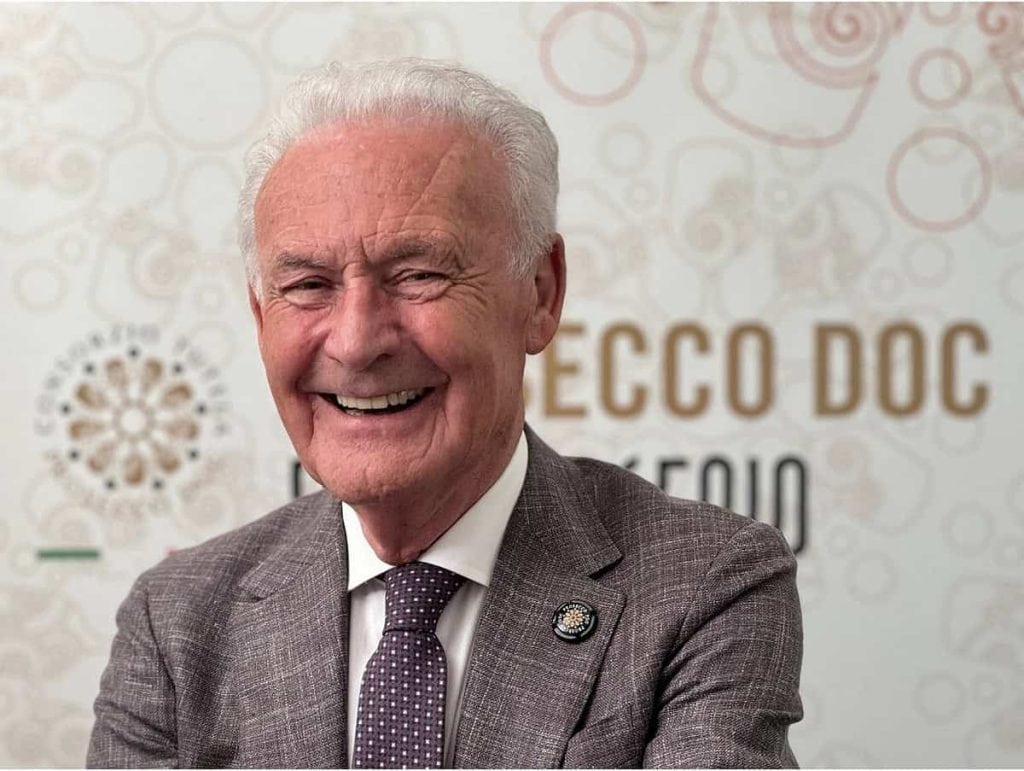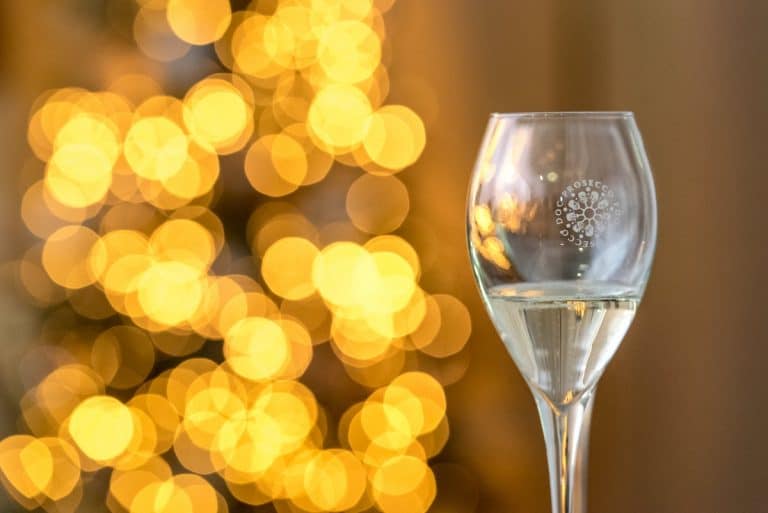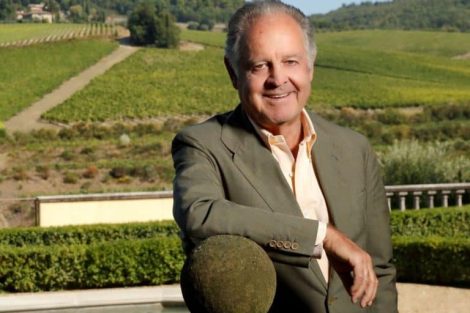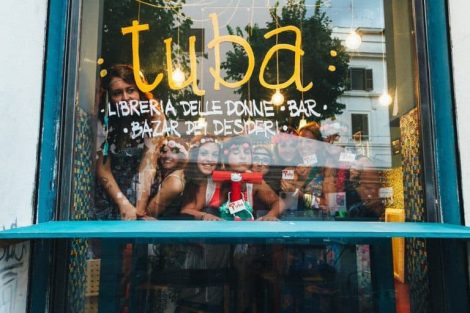The Prosecco of the future will have a lighter touch. Judging by the trends emerging in the global beverage market, it’s likely that consumers will welcome – as they already do – a sparkling, easy-to-drink, and, above all, moderate product. In the year that celebrates its highest production record ever, estimated at between 650 and 660 million bottles, the Veneto-Friuli mega-district is looking ahead, exploring ways to cater to even the most discerning palates, particularly younger drinkers, with a light version.
The Prosecco DOC Consortium is hard at work, as Consortium President Giancarlo Guidolin explains in an exclusive interview with the Tre Bicchieri weekly. Today, the minimum alcohol levels for DOC Prosecco are set at 10.5% ABV for frizzante and tranquillo styles and 11% ABV for spumante. The idea is to lower this threshold to 8–9 milliliters of ethanol per 100 ml of wine. This wouldn’t involve dealcoholization – not permitted under the Masaf decree for PDO wines – but rather a reduction in alcohol content through agronomic and winemaking adjustments. Such an approach could bring clear marketing and communication advantages.

International sales and future prospects
Foreign markets have embraced Prosecco, which accounts for 20% of Italian exports in the first nine months of 2024. How significant is this for your success?
I believe our success is linked to the rise of a certain consumption style, the versatility of our product, and the fact that sparkling wines have moved beyond traditional settings, becoming part of other moments in the day. We also appeal to younger consumers and those who enjoy out-of-home experiences. Prosecco's popularity is rooted in its approachable style—less complex and cerebral than other wines, yet highly enjoyable. This aligns with the concept of hedonistic experiences, something the younger generation actively seeks. If producers want to keep their wines relevant, they must adapt their narratives.
How will 2024 close, and what are the prospects for 2025?
We will hit an all-time high in bottling this year: between 650 and 660 million bottles, reflecting a significant growth of around 6%. This has been achieved in a context of stable consumer prices, although we observe that value is increasingly shifting toward distribution rather than production. Looking at markets, we’re seeing double-digit growth in France, while the United States, the UK, and Germany remain key markets. For 2025, the focus will be on safeguarding value through controlled growth. Despite a 2024 harvest yielding lower-than-expected results—about 170 quintals per hectare—we’ll utilize tools provided by the Consortium to meet any increase in market demand.

Transforming the image of italian wine
Over the years, Prosecco has cultivated a “pop” image. Do you believe this has fundamentally altered the perception of Italian wine globally? Is this a strength or a weakness?
The international image of Prosecco and sparkling wines has indeed changed, which we see as a strength. Our positioning differs from other Italian excellence. We use the term “democratic luxury” because we’ve cultivated an accessible, contemporary, and youthful image. Our next campaign will focus on sharing and sociability—emphasizing wine as a means of connection rather than escapism. Prosecco is an icon of Italian savoir-faire, representing “Italian fine living.”
How does the rise of aperitifs and mixology impact your product?
While mixology has benefited from a high-quality product like ours, I wouldn’t say our success is reliant on it. Today, Prosecco as an aperitif is part of a hedonistic journey, with consumers choosing specific Proseccos for cocktails, much like with vermouth or gin. That said, some consumers mistakenly believe Prosecco is used in cocktails when it isn’t, highlighting the need for operator transparency.

Lower-alcohol and new variants
Prosecco already has a lower-than-average alcohol content for Italian wines. Could a DOC sparkling wine with reduced alcohol meet the demand for moderate drinking?
Technically, we could already produce an aromatic sparkling wine with a base alcohol content of 8.5% ABV, though it would fall into the sweeter demi-sec category. However, maintaining the classic Prosecco profile would require a lower residual sugar level. Experiments are underway to produce sparkling wines with 8–9% alcohol, preserving Prosecco’s fresh, floral, and fruity characteristics. These are pure experiments at this stage, involving universities and research centers.
What about a dealcoholized Prosecco?
At present, PDO wines aren’t affected by regulations on dealcoholized products, so this isn’t on our Consortium’s agenda. However, we acknowledge that such products could be an opportunity for our industry, provided they align with sustainability principles.

Prosecco rosé and market challenges
How has Prosecco Rosé performed in 2024?
In the first ten months of the year, nearly 60 million bottles were sold—a 21% increase compared to 2023. This represents about 10% of the denomination’s total volume, aligning with the Consortium’s initial projections of 8–12%.
Are there areas for improvement?
We need to improve penetration in the Horeca channel. Some restaurants and wine shops previously skeptical of Prosecco have embraced Rosé, appreciating the structure provided by the Pinot Noir vinified as red.
What about tariffs and international trade?
The U.S. accounts for 22% of DOC Prosecco’s foreign sales, with a 14% increase in the first nine months of 2024. We’re monitoring the market closely. The Mercosur agreement could present a significant opportunity once the use of the Prosecco name is clarified.

What’s the outlook for anti-counterfeiting technology?
We’ve implemented an AI-powered chatbot and are developing a database of Prosecco labels for better oversight. This pilot project could become a model for other Italian industries.
How is the relationship with Conegliano Valdobbiadene and Asolo DOCGs evolving?
We aim to highlight each denomination’s unique characteristics without negatively impacting any particular one. Collaborative communication strategies will strengthen our collective positioning while celebrating our differences.



 With fish, you can (also) drink red!
With fish, you can (also) drink red! The story of the pharmacist who dispenses prescriptions by day and crafts gourmet burgers by night
The story of the pharmacist who dispenses prescriptions by day and crafts gourmet burgers by night "Biodynamic preparations ave no effect on viticulture": The shocking conclusions of a Swiss study
"Biodynamic preparations ave no effect on viticulture": The shocking conclusions of a Swiss study Ten last-Minute Christmas gift ideas for a wine nerd
Ten last-Minute Christmas gift ideas for a wine nerd Food and wine tourism generates €40 Billion in revenue: Tuscany, Emilia-Romagna, and Puglia take the podium
Food and wine tourism generates €40 Billion in revenue: Tuscany, Emilia-Romagna, and Puglia take the podium






